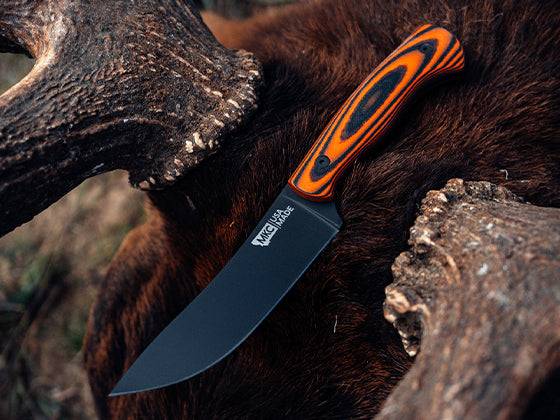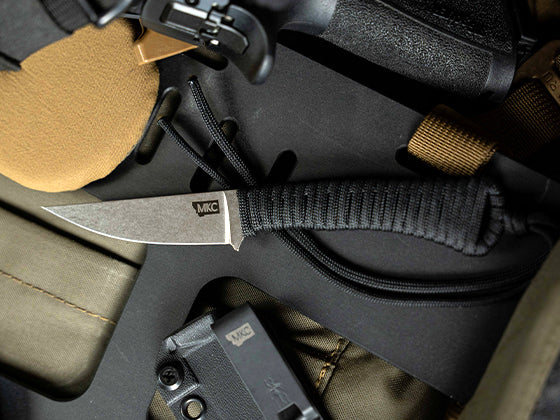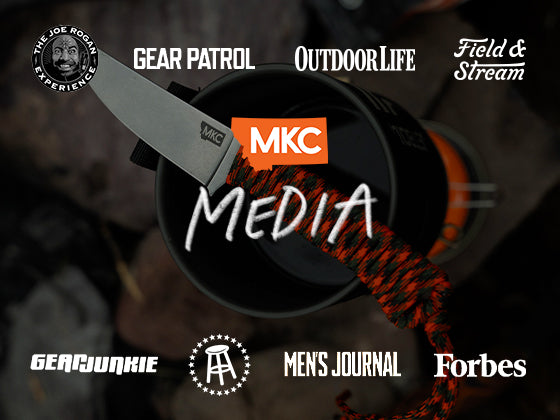Whether you like to gut-and-go after a successful kill or break an animal down at your camp, a great butcher knife is an essential part of your kit. Here’s how to choose the best butcher knife for your next outing.
What Is a Butcher Knife Used For?
A butcher knife is for, well, butchering. In the field, it can break down whole carcasses, remove muscle from bone, separate muscle sections, trim sinew and connective tissue, and more.
Your butcher knife’s usefulness doesn’t end when you get back from camp — it’s handy in the kitchen, too. After the breakdown process, your butcher knife can portion muscles into steaks, roasts, and smaller cuts.
Types of Butcher Knives
Butcher knives come in two main types: boning knives and breaking knives.
Six-inch boning knives work best for deboning muscles, removing sinew and connective tissue, trimming excess fat, and portioning an animal into final cuts. In a pinch, they also make great skinning and caping knives.
Eight and 10-inch breaking knives excel during carcass breakdown. You may also find them more comfortable to use on larger game, especially when portioning large muscles into steaks or roasts.
We recommend a two-piece butcher knife set — with one of each type of blade — to tackle different tasks with ease.

Choosing a Butcher Knife: Factors to Consider
Want to purchase a new butcher knife? First, consider its comfort. Butchering isn’t a quick process. Your knife should feel good in your hand, even after an hours-long field dressing session.
Next, judge the blade’s quality. The best butcher knife holds its edge without frequent sharpening (more on that in a bit).
Also, consider the blade’s flexibility. You may want a blade that glides through bones and joints instead of hacking into them, leading to imprecise cuts.
The blade’s length alters its functionality. If your butcher knife feels too long or too short for your current task, consider adding a new blade to your set. The same goes for the blade’s shape — if it doesn’t feel right for the task, don’t force it.
Finally, your butcher knife should be easy to keep clean. A hygienic blade is of utmost importance — you and your family eat that meat, after all. An easy, stress-free cleaning process keeps everyone healthy.
Maintaining Your Butcher Knife
Your butcher knife’s maintenance process depends on how you use it and what it’s made of. Carbon steel wears differently than stainless steel, for example.
A polyethylene cutting board designed for knife use is invaluable for maintaining your blade’s edge. Also, avoid nicking your knife on the bone and teeth of the animal you’re butchering.
If your butcher knife sees frequent use, your edge maintenance process should look roughly like this: a honing steel weekly, a fine sharpening stone monthly, and a coarse sharpening stone yearly.
A honing steel should maintain your knife’s edge for most tasks. Every knife has microscopic serrations along its sharp edge. As you use your knife, these microserrations start to bend. A good honing steel stands them back up and aligns them effectively.
Over time, the microserrations along your butcher knife may wear down or break off. If your honing steel doesn’t seem to work anymore, it’s time to sharpen instead of hone. A fine-grit whetstone creates new teeth and a fresh edge.
If it’s been a while since you’ve sharpened your butcher knife — or if you use it frequently — a coarse whetstone can reestablish its sharpness. You shouldn’t need it often, but it’s good to have one around. We recommend a dual-sided whetstone.

Our Final Thoughts on Butcher Knife Selection
The most important part of choosing a butcher knife is finding a blade that works for you. It should be sharp, durable, and satisfying to use. After all, the safest and most effective knife is one with a sharp, maneuverable blade that feels secure in your hand.
by Josh Smith, Master Bladesmith and Founder of Montana Knife Company
with The Bearded Butchers, Seth & Scott Perkins, CEOs of Whitefeather Meats and Bearded Butcher Blend Seasoning







































